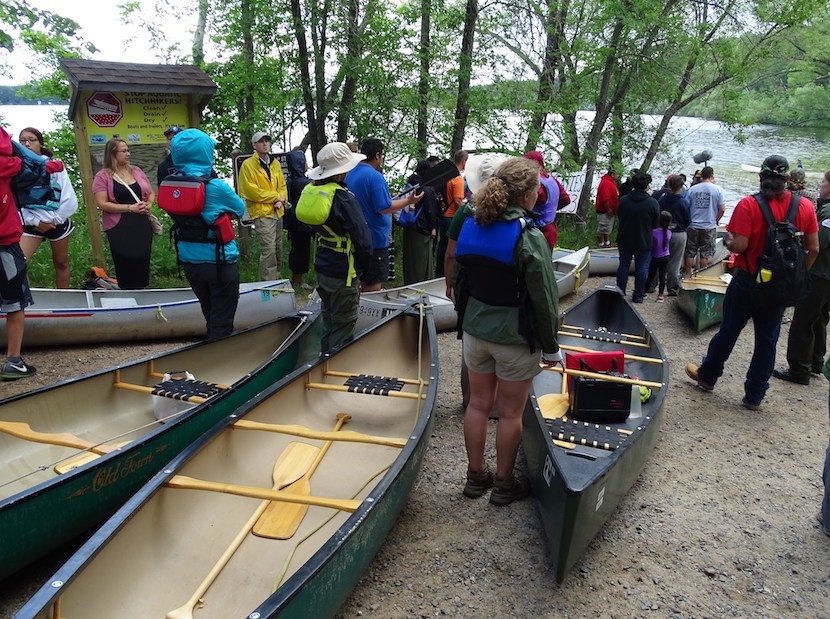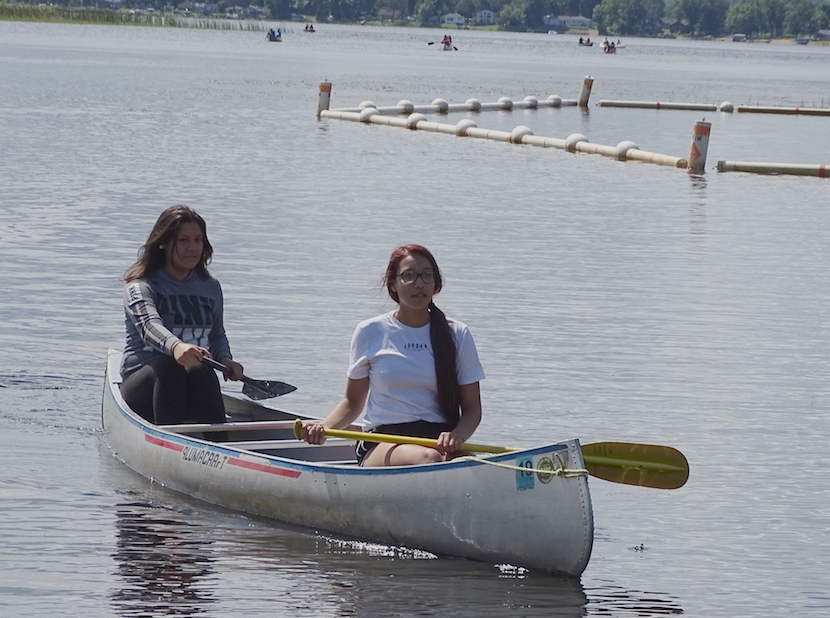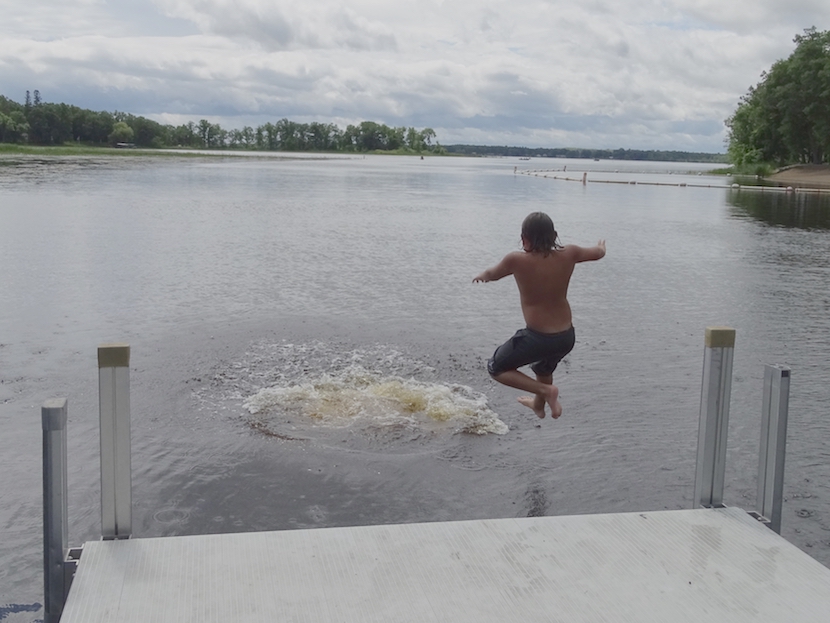
Attendance at Mikwendaagoziwag, We Remember Them, was higher this year than it has ever been before. The yearly memorial for the Sandy Lake Tragedy, where hundreds of Anishinaabe lost their lives in the winter of 1850, is hosted by the Great Lakes Indian Fish and Wildlife Commission.
The Commission’s Executive Administrator Michael J. “Mic” Isham Jr., Chairman of the Lac Courte Oreilles Band of Lake Superior Chippewa Indians, welcomed the first wave of attendees on the east side of Big Sandy Lake in the morning. Many people came with their own canoes, and some brought extra canoes. The Mille Lacs Band Department of Natural Resources trailered in five canoes, some for staff and several which were loaned to visitors taking part in the ceremony.
The yearly paddle commemorates the long journey taken by Anishinaabe ancestors who were pressured to go to San- dy Lake in order to receive their annuities from the Bureau of Indian Affairs. The annuities were usually dispensed at the fa- miliar and central location of La Pointe, Wisconsin. This place, known as Mooningwanekaaningminis to the Anishinaabe, was a sacred place where ceremonies took place long before the arrival of settlers. In 1850, all the Anishinaabe in the region were told instead to go to Gaa-mitaawangaagamaag (Big Sandy Lake) to receive their annuities, in an attempt by U.S. government agents to remove tribes from the east and force them west of the Mississippi.
The trip to Big Sandy Lake was much further for many Anishinaabe, requiring more investment of resources that were already spread thin. Some made the journey to Sandy Lake and some stayed home. Those who traveled were welcomed with the willful negligence of the Bureau of Indian Affairs, which did not have the provisions it had promised to the people. The people were told to wait, and as winter set in, hundreds died on the shores of the lake and hundreds more perished trying to get home.
At this year’s remembrance ceremony, despite the largest crowd of people to have ever showed up for the paddle, Mic Isham asked each person to share their name, where they were from, and why they had come. From Elders to school children, each person offered some insight into the significance of this event, not only historically but culturally and, in many cases, personally. Many had come to honor their relatives, some simply to remember, and all came with respect.
Dozens of canoes took to the water, under the watchful eye of Minnesota Department of Natural Resources officers, who escorted the paddlers across the lake and rescued those from the one or two canoes that capsized. Though there were clouds in the morning and some drizzle during introductions, it turned into a beautiful day by the time all the canoes were launched. The canoes took an average hour-long trip from the East Landing across Sandy Lake to the landing at Libby Dam on land held by the Army Corps of Engineers. According to Mic Isham, there were at least triple the number of participants in this year's event than at any previous GLIFWC-organized event, and it took paddlers into the afternoon to all make the crossing. At whatever point they landed, they always found a crowd on the shore to welcome them.
Lunch was served shortly after the last paddlers were accounted for, and after making sure everyone was fed, Mic Isham thanked the pipe carriers, drummers, singers, and Elders who both make the Sandy Lake Memorial event possible and help carry on the traditions of the people. Isham also emphasized that the history of the Anishinaabe, including the events at Big Sandy Lake, are both a great asset and a great responsibility. These are events that aren’t widely known or acknowledged outside of the Anishinaabe community. According to Isham, “They don’t teach this in the schools. They still teach Columbus discovered America.” Isham claims that has to change; the change, he says, begins with each person and the way they tell the story.
Along with some playful canoeing competition, leaders from attending tribes are always invited to speak following the meal. GLIFWC Chairman Jim Williams Jr. appreciated the ef- fort put into the event by staff and helpers. He mentioned that during the crossing, he started to get tired, but he simply reminded himself that this was nothing compared to the arduous journey his ancestors had to make for him.
Mike Wiggins from the Bad River Band summed it up by saying, “We come back and experience the history that’s here. We send love and gratitude back to our ancestors that they rest a little better.”


